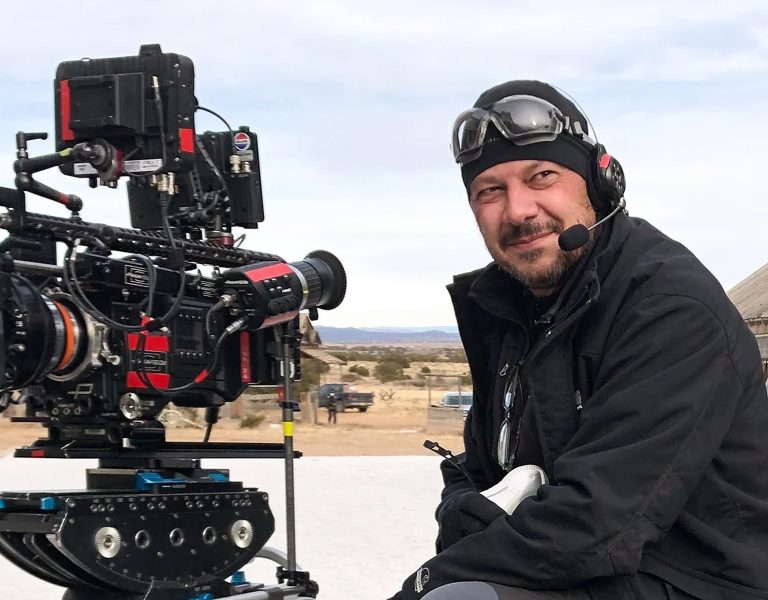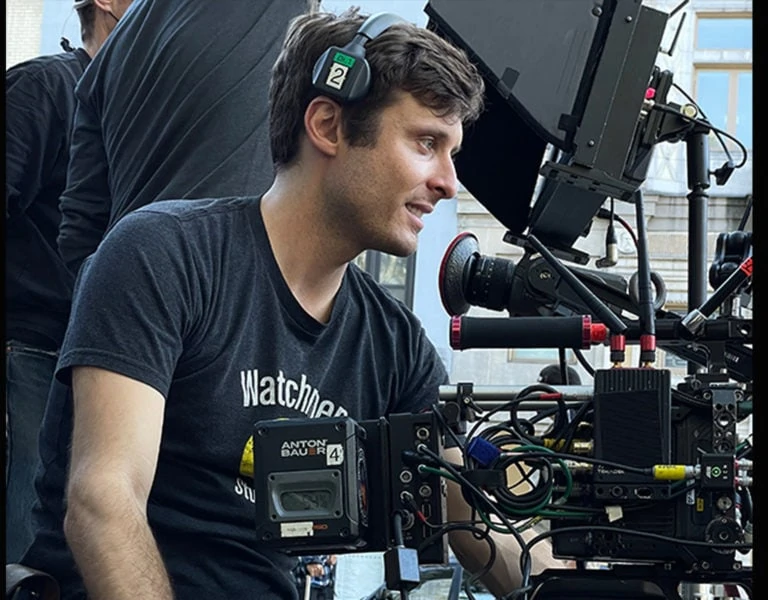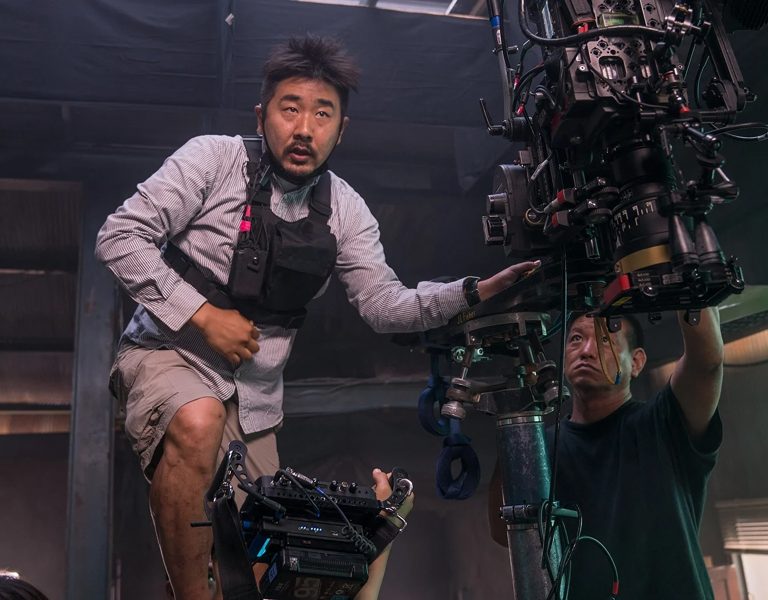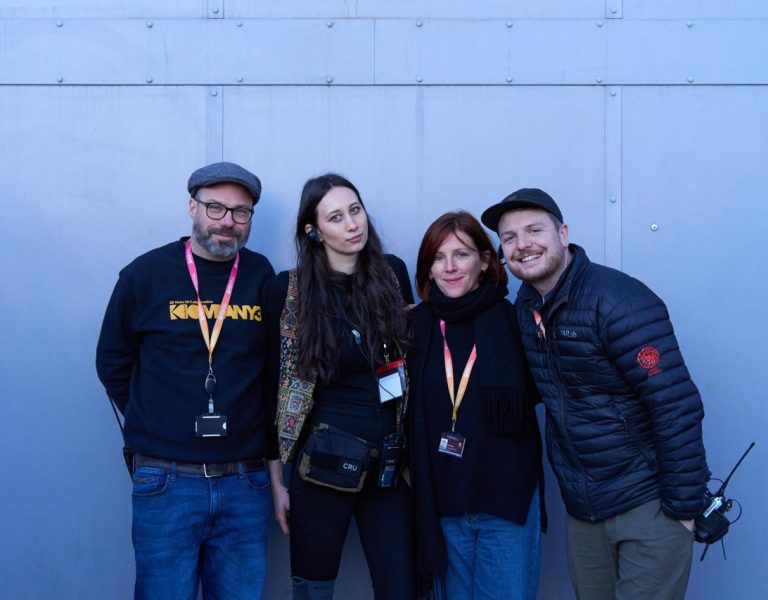PAINTING THE PICTURE
Santosh Sivan ASC ISC views art as storytelling. With over 100 film credits to his name, he’s arguably India’s finest living cinematographer. Additionally, he’s a director, producer, and actor. At the 2024 Cannes Film Festival, he was honoured with the Pierre Angénieux Tribute, where he shared highlights from his outstanding career.
Santosh Sivan ASC ISC was introduced to visual storytelling from as far back as he can remember. Born 8 February 1964, raised and educated in Trivandrum in the Indian state of Kerala, he was introduced to the art of storytelling from a very early age, courtesy of his grandmother who used to teach painting in the Kawadiar Palace.
“My grandmother would encourage me to paint and sketch from a very early age,” he recalls. “And then she would bring home calendars of a very famous Maharaja who used to paint called Raja Ravi Varma. We would sit together and she would tell the story of the painting, which I think was the beginning of my visual education.”
In the blood
Not only was Sivan’s grandmother a talented artist, his father was a respected stills photographer, so he quickly learnt how the camera works. Then later on, he joined the Film and Television Institute of India in Pune where he did a three-year course learning motion picture photography. Upon graduation, instead of trying to secure work on a production, Sivan wanted to go solo. “I didn’t want to assist people, be an apprentice or trainee,” he says. “So, I took my Bolex camera, later a Canon Super 8 and started travelling on my own and shooting mini documentaries. Then someone asked me to shoot a film called Nidhiyude katha on 16mm and blow up, so I agreed.
At the time, film had to be processed and printed in Bombay (Mumbai) and “it was a big thing for 16mm films to be blown up to 35mm” because of the cost factor. “So, when the film came to Bombay, people were curious who shot it and wanted to know who I was. I got my break after people saw this footage.”
Despite accepting Bollywood projects, Sivan wanted to shoot things back in Kerala, things he had in his mind, such as rivers and fields. So, he did a lot of work there and the Bollywood call came again. Malayalam is Sivan’s mother tongue, but his experience of working across India means he also understands Hindi and Tamil. Sivan says it’s hard to say which is his favourite film to date because he has favourites for different reasons. However, at the moment it’s one he’s directing called Zuni, which was shot in Kashmir. ”It’s about a 17th century figure called Habba Khatoon, who was a queen and poetess,” he adds. “I have shot 20% of the film and it’s come out very interesting.”
He’s also working on a film called Lahore 47 and a very big film called Raja Shivaji.
Working on as many films as Sivan has, one has to be a team player and, in his experience, there are so many different ones. “Some people are very specific about what they want, whilst others just leave you to make the decisions,” he adds. “When you take on the role of DP, you’re not sure unless you have worked with the director before. You don’t know what your real goal is until later. I also worked with a lot of actors who direct and that can be problematic because they are thinking about things as an actor and a director. One minute they are behind the camera and the next they are standing in front of you.”
Sivan also reserves praise for a number of cinematographers whose work he has seen over the years. “I love the work of Subrata Mitra (The Apu Trilogy) who worked with Satyajit Ray. I also admire Vittorio Storaro ASC AIC and Néstor Almendros ASC.”
His heart is with shooting on film, but he concedes that it’s becoming more difficult to do so in India. “The film stock might not be fresh, so we have to place orders. Processing is also not straightforward, so there are a lot of headaches if you only want to shoot on film. That’s the reason we all opt for digital.”
In terms of his kit bag, Sivan is open-minded. “I like to try out all the lenses,” he says. “I have been using Cookes, Canons, Zeiss. Whatever the production is, I will test the lenses and the same goes for cameras.”
Close to home
Despite offers to shoot European and American films, Sivan prefers Indian cinema. However, he enjoys creating films that “cross cultures.” For instance, Before the Rains (2007), set in 1930s Malabar, depicts T.K. Neelan navigating ambition and tradition amid a nationalist movement. It features Linus Roache and Rahul Bose. “That was shot entirely in Kerala and I love that.”
Furthermore, he also prefers films to series. “There are some great series in India and of course in the West, like Game of Thrones,” he says. “But, when it’s a series, the making of each episode can be different and you don’t know who is behind an idea. I want every film I work on to be the best.”
Santosh Sivan has become the first Indian to receive the prestigious Pierre Angénieux tribute at the 2024 Cannes Film Festival. He was also one of the founding members of the Indian Society of Cinematographers (ISC).














